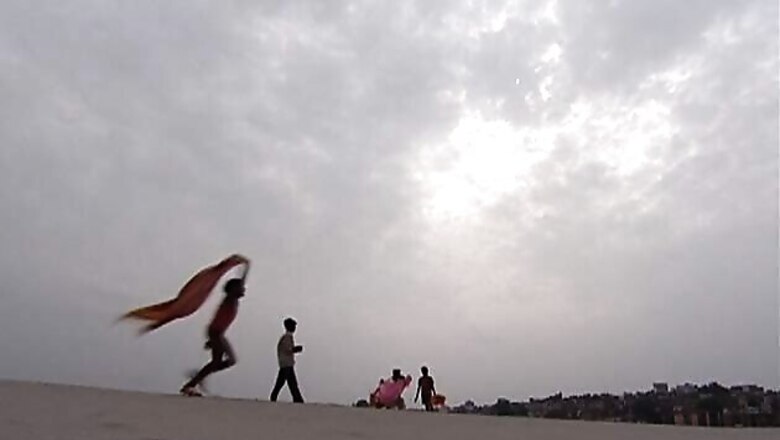
views
Cast: Yogi, Manish, Ashish, Gagan, Ravi
Director: Rajesh Jala
Filmmaking is not just another job; especially of you are into indies. We all have heard and felt that cricket and cinema are the two essential lifelines of India, but we generalise the term so much that we forget to understand that cinema is not just about entertainment. There is a certain type of filmmaking which is beyond money making and is mostly about concerns and artistic freedom. Sometimes I wonder what could have hooked these filmmakers to a stream which doesn't produce many rewards. A film like 'Children of the Pyre' explains the reasons and presents the case of independent filmmaking strongly. The story proceeds in such a way that after a point of time you start believing in the moral 'duties' of a filmmaker.
Let me tell you in the beginning only that it's a National Award winning film, but it's very ironic. Normally, we do perceive the National Awards as the acknowledgement of talent, creativity and uniqueness, but we also take it as something which is funded by the establishment. So, if the jury finds a film made on the troubled childhood of some Benares ragpickers top award worthy then it's like the acceptance of the government's failure in understanding the grass root issues.
Rajesh Jala, the director of 'Children of the Pyre', chose Benares as the space of his film. It must have been a tough decision because a good research means hundreds of days in an unfamiliar land. Anyway, let's not praise the director just on the basis of the canvas. The film studies the influence of globalisation on places which were secluded and used to possess their own identity some 15 years ago. Benares is an interesting city because it is placed at the cusp of different social orientations. There was a time when it was known as a lazy city, but with the advent of technology and infusion of money it has turned into a confused progressive city. The traditional still believe that the Ganga Aarti is not a thing to be missed while the new blood is mostly worried about their purchasing capacity.
Last year, there were reports that the famous Ramleela of Varanasi is slowly losing its charm because of the lack of funds. Why is this happening when the city is witnessing the opening of new malls?
The documentary makes it very clear in the beginning that the audience should not expect a feel good film as it features heart wrenching images. Well, the director actually meant it as the premise of the film is Manikarnika Ghat and its adjacent places. Those who know Benares also know the importance of Manikarnika in the life. The local mass comes here to burn the dead bodies. So, the story begins with a bunch of children whose prime duty is to help the visitors in arranging the pyre and other religious rituals. Once the pyre is reduced to ashes, they get their wedges and begin to look forward to the next dead man. The situation is more absurd rather grim than what my words are conveying. Just imagine the condition of children spending day and night among burning pyres. The collective failure of the society lies not just in their presence at such a place, but in their absence from schools. Poor, downtrodden, illiterate and bitten by the bug of globalisation, these kids have turned into a walking inferno. Foul mouthed, hardened from inside, drug addict, these are the real by-products of social negligence. And mind you, this is not a Bollywood film where they will still behave as per the popular expectations.
The perspiring faces of the children who are regular substance abusers mock the so called mission 2020. Are we not living in a bubble? How can we even dream of pulling everyone above the poverty line without rectifying the historical mistakes of our 'socialist' democracy?
There is a point in the film where a 10 something child sings the National Anthem. His version is distorted but very meaningful. It's a mixture of the songs he hears around him and reminds the viewer of their own vulnerable state.
Rajesh Jala tracked his characters for a long period and this reflects in the film because the children open their darkest secrets to him, but sometimes this proximity works otherwise when the children call him sir. It immediately establishes the distance between both sides of the camera. Also, it seems he is trying to put words in the children's mouths. But, it's a minor fault and the film offers so much that you would willingly overlook it.
The later part of 'Children of the Pyre' becomes more interesting as it showcases songs and dance. The cinematographer and the sound designer have done a marvellous job as they didn't let any single significant event slip by. The mood and the flavour of the city is evident in a scene where the pyres are burning beside a 'cultural' event. This is that reality which nobody wants to address. We have neither become capitalists nor have remained socialists.
Sometimes the seven protagonists find the National Flag while picking the shrouds from the holy river. They sell it for Rs 3-5. The use of Kumar Gandharv's song in the background also gives the story a new dimension.
To me, the most significant aspect of 'Children of the Pyre' is the anger with which these kids are growing up. Trust me, they can become anything if not channelized well, and then we will curse the system for their emergence without realising that we have also failed them.
Overall, 'Children of the Pyre' is haunting, finely crafted and important. I won't mind giving the National Award to such a film again.####

















Comments
0 comment